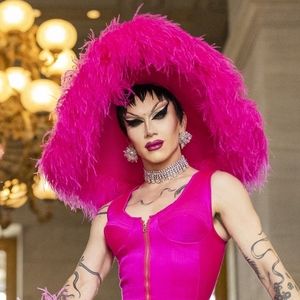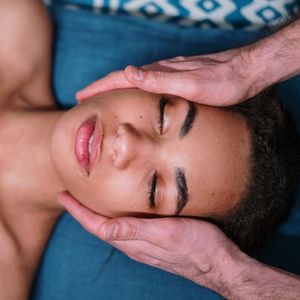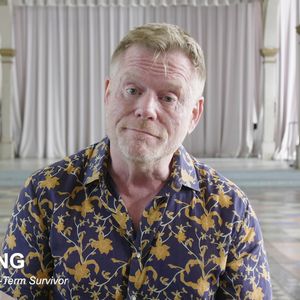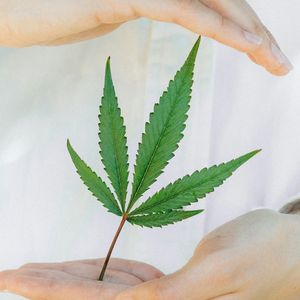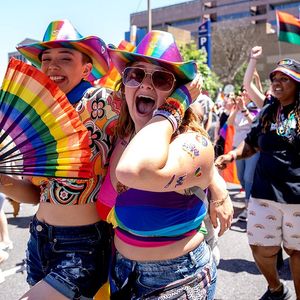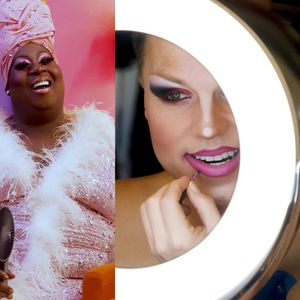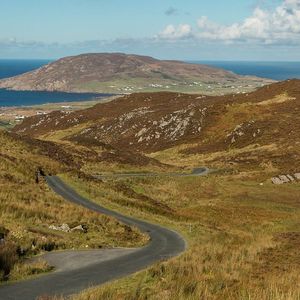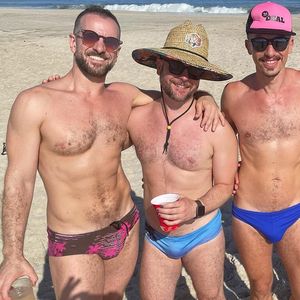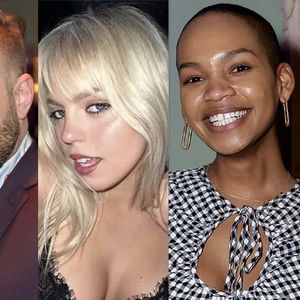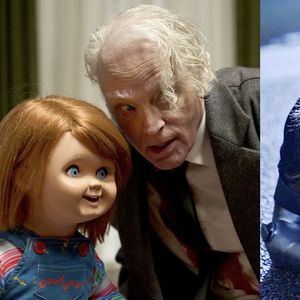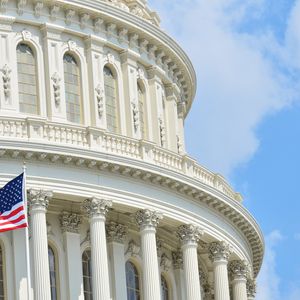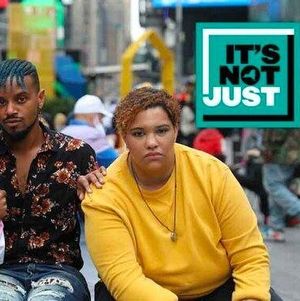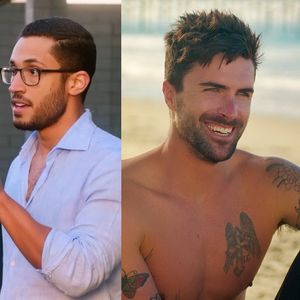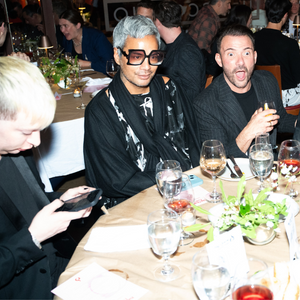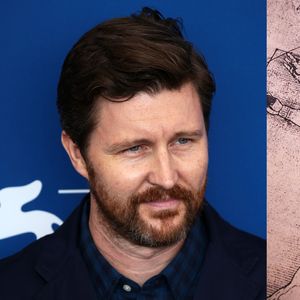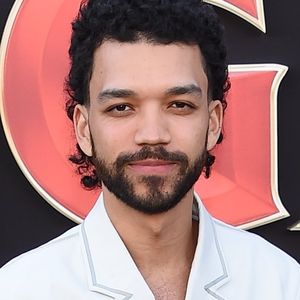Today, thousands of students across the world will be silent by choice.
They'll be honoring the Gay, Lesbian, and Straight Education Network's Day of Silence, a student-powered action to raise awareness of anti-LGBT bullying, name-calling, and harassment. To participate, students vow to be silent for an entire school day, symbolizing the all-too-common silencing of LGBT youth that happens in our schools on a daily basis.
The Day of Silence began as a class project in 1996 at the University of Virginia, when students were given an assignment on nonviolent protest. A student named Maria Pulzetti planned a day of silence for her school, and 150 students participated in the inaugural event. The following year she and classmate Jessie Gilliam strategized to bring the action to other schools across the country, thus launching the National Day of Silence. And in 2000, students brought the Day of Silence to GLSEN, making it an official GLSEN program.
Since the very beginning, the Day of Silence has been powered by students. Last year students in all 50 states and at least 70 countries participated. Their message is simple: Even as the marriage equality movement gains traction and LGBT characters make appearances on mainstream television shows, schools remain unsafe places for LGBT students. And in a time when the majority of states do not have antibullying, antiharassment, and nondiscrimination protections in place for LGBT youth, the Day of Silence is as relevant as ever.
 GLSEN's research shows that the overwhelming majority of LGBT students experience victimization and discrimination at school. According to GLSEN's latest National School Climate Survey, the country's only biennial report on the school experiences of LGBT youth, 56 percent of LGBT students felt unsafe at school because of their sexual orientation and 38 percent because of their gender expression. More than half of LGBT students reported hearing school staff make homophobic remarks. Nearly a third had missed a day of school in the last month because they felt unsafe or uncomfortable.
GLSEN's research shows that the overwhelming majority of LGBT students experience victimization and discrimination at school. According to GLSEN's latest National School Climate Survey, the country's only biennial report on the school experiences of LGBT youth, 56 percent of LGBT students felt unsafe at school because of their sexual orientation and 38 percent because of their gender expression. More than half of LGBT students reported hearing school staff make homophobic remarks. Nearly a third had missed a day of school in the last month because they felt unsafe or uncomfortable.
We refuse to accept an educational landscape where a majority of students cannot focus on their studies, their hobbies, and their own well-being because they are afraid to be themselves.
So every April, GLSEN joins LGBT students and their allies to send the message that anti-LGBT bullying is a stifling problem -- one that deserves to be addressed.
Of course, the Day of Silence has its opponents among the usual anti-LGBT groups; some even go as far as to keep their children home from school on the Day of Silence to "protest" a movement seeking to keep schools safe and affirming for all students.
More complicated, though, is the resistance we face from those who are allied with our cause: If LGBT youth are harassed into silence every day, they ask, what good does silence do? Why not a Day of Noise?
To answer that, we turn to GLSEN students, who tell us year after year how participating in the Day of Silence empowered them in their advocacy.
The Day of Silence belongs to students like 18-year-old Kriss, whose rural Georgia high school gave students one day of in-school suspension for participating in the Day of Silence last year. Kriss had previously met with the principal to ask permission to hold a Day of Silence event. When her request was denied and she led 50 students to take a vow of silence anyway, Kriss spent the next two weeks in in-school suspension -- plus a third week for refusing to cover up a homemade shirt reading "Gay is OK."
Today, Kriss will participate in her fourth and final Day of Silence as a high school student -- and with the full support of her school administration, which has decided to formally recognize students' participation in the Day of Silence for the first time ever.
When The Advocate covered GLSEN's Day of Silence in 2002, reporter Victoria Scanlan Stefanakos described the day as an "organized act of civil disobedience" empowering students to illustrate a nationwide problem. "The idea," she wrote, "is to turn silence, a tool that has often deprived people of their power, into an intentional group activity."
 Some students use the Day of Silence as their coming-out moment or their introduction to LGBT activism. Others participate from a distance, going about their days normally but practicing "silence" by abstaining from social media for the day. Those who decide not to take a vow but who want to show solidarity sometimes wear the color red or sport supportive stickers or buttons.
Some students use the Day of Silence as their coming-out moment or their introduction to LGBT activism. Others participate from a distance, going about their days normally but practicing "silence" by abstaining from social media for the day. Those who decide not to take a vow but who want to show solidarity sometimes wear the color red or sport supportive stickers or buttons.
Back in 2002, Stefanakos quoted then-15-year-old Nikira Hernandez: "Seeing how many allies we had made me feel much more accepted at my school. It's been amazingly liberating. I know I'm taking power over my own destiny."
Students who participate often carry cards explaining the Day of Silence to their peers, challenging others to think about whose voices they aren't hearing. Classmates may poke and prod, taunting those who observe the day to "c'mon, just say something." Some students are prohibited from participating, or, like Kriss, they risk suspension or other pushback from school administrators who consider peaceful silence a "distraction" during the school day.
It's frustrating and inconvenient to refrain from speaking all day, but it's nothing compared to the weeks, months, or years of silence forced onto an LGBT student who's too scared to speak.
So today, thousands of students will choose silence. Whether they decide to be silent from the morning bell through the last class of the day, during their lunchtimes and passing periods, or only on social media, these student activists will upend silence as a form of oppression and choose silence as a tool for social change. One silent student can go unnoticed; thousands of silent students demand to be heard.
GLSEN will also kick off data collection for its next National School Climate Survey today, asking LGBT youth to "break the silence" by sharing their school experiences. We hope students can conclude  this powerful day by reflecting on what the Day of Silence meant to them and reporting back to GLSEN about their school climate. Some students also participate in "Breaking the Silence" events, where they gather to make noise for the first time all day and reflect on how the day affected them, individually and collectively.
this powerful day by reflecting on what the Day of Silence meant to them and reporting back to GLSEN about their school climate. Some students also participate in "Breaking the Silence" events, where they gather to make noise for the first time all day and reflect on how the day affected them, individually and collectively.
If you're a student participating in GLSEN's Day of Silence, we encourage you to add your name to the list of activists joining forces on this important day. DayOfSilence.org can offer you plenty of resources and a quick FAQ guide to help you get the most out of the Day of Silence. Finally, if you're an educator or other adult supporting student participants, we implore you to learn about how best to support students on the Day of Silence -- or even to take a vow of silence yourself!
GLSEN's Day of Silence belongs to the students who participate, and it impacts every one of them differently. Together, we will end the silence.
CAMILLE BEREDJICK is the youth engagement associate at GLSEN, the Gay, Lesbian, and Straight Education Network.
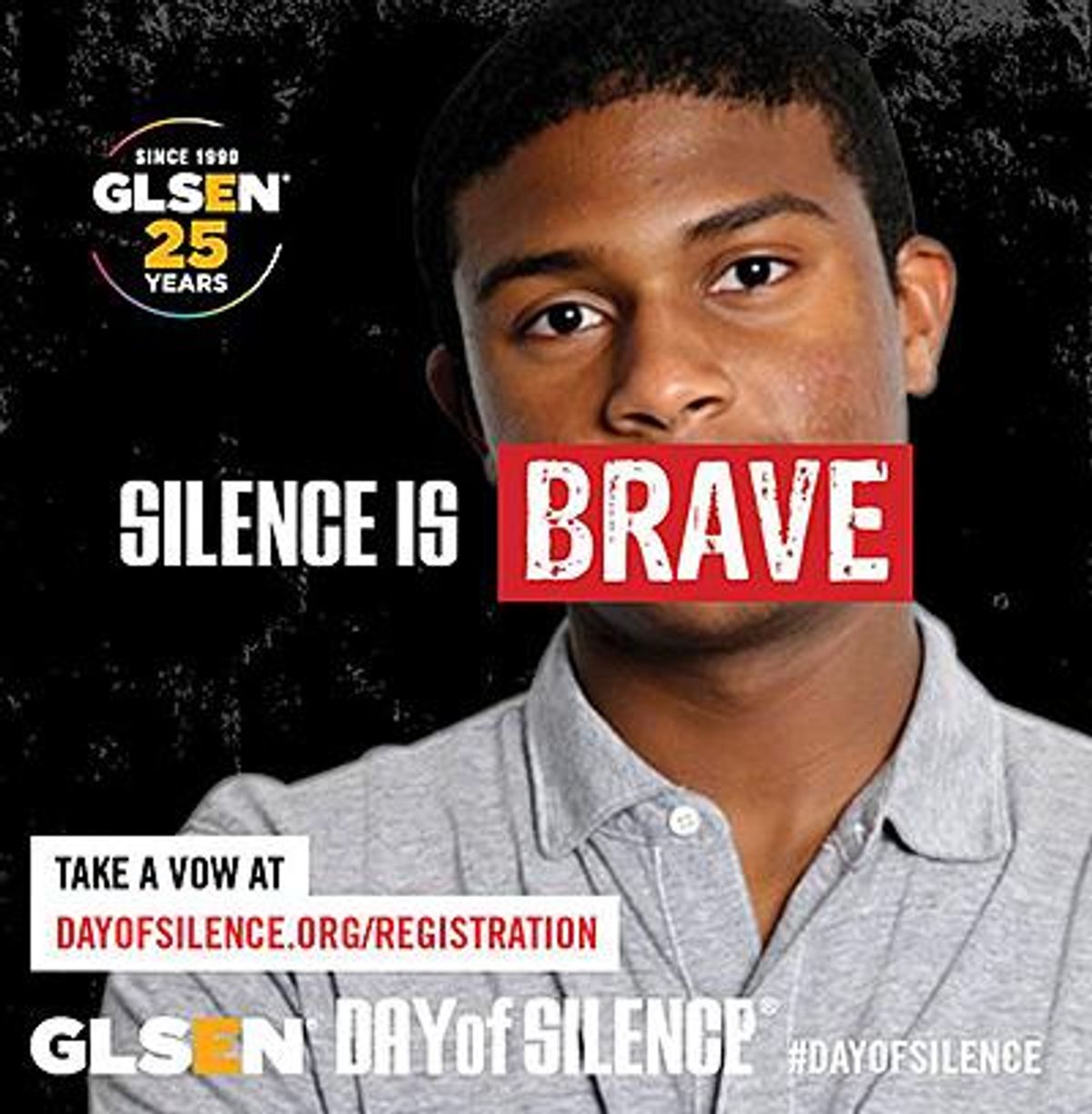

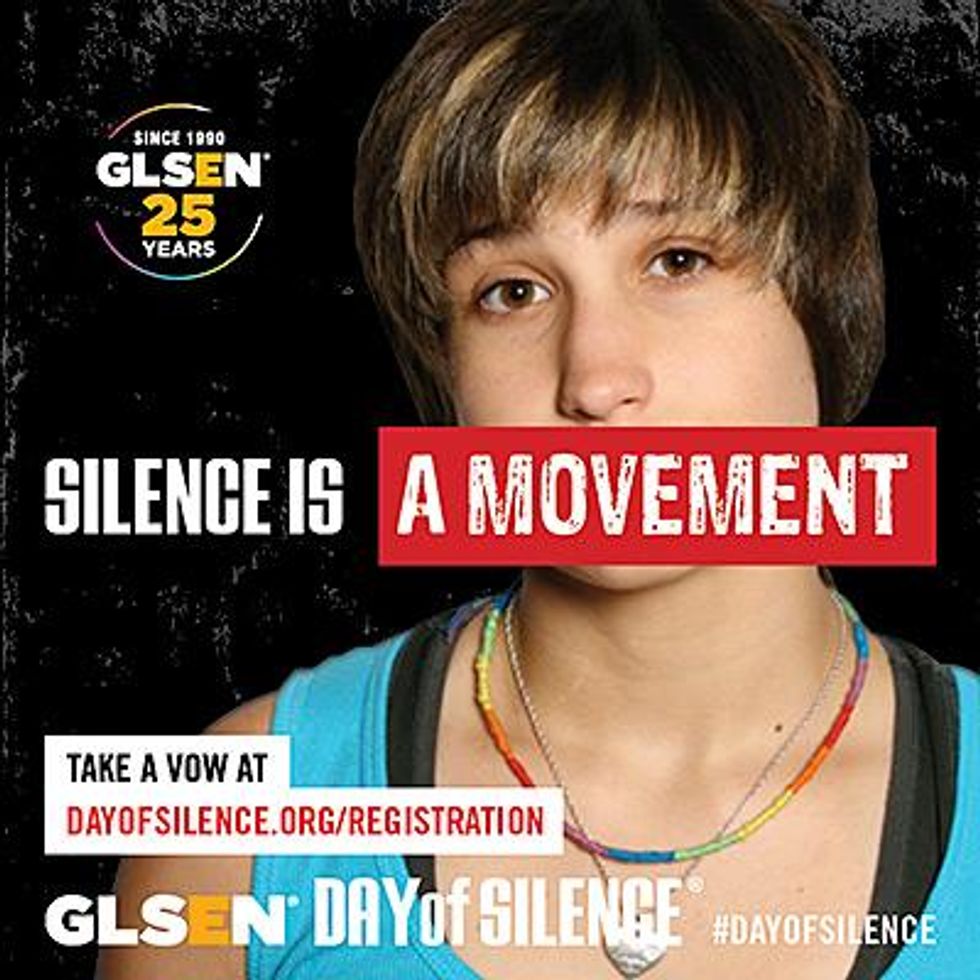 GLSEN's research shows that the overwhelming majority of LGBT students experience victimization and discrimination at school. According to GLSEN's latest National School Climate Survey, the country's only biennial report on the school experiences of LGBT youth, 56 percent of LGBT students felt unsafe at school because of their sexual orientation and 38 percent because of their gender expression. More than half of LGBT students reported hearing school staff make homophobic remarks. Nearly a third had missed a day of school in the last month because they felt unsafe or uncomfortable.
GLSEN's research shows that the overwhelming majority of LGBT students experience victimization and discrimination at school. According to GLSEN's latest National School Climate Survey, the country's only biennial report on the school experiences of LGBT youth, 56 percent of LGBT students felt unsafe at school because of their sexual orientation and 38 percent because of their gender expression. More than half of LGBT students reported hearing school staff make homophobic remarks. Nearly a third had missed a day of school in the last month because they felt unsafe or uncomfortable.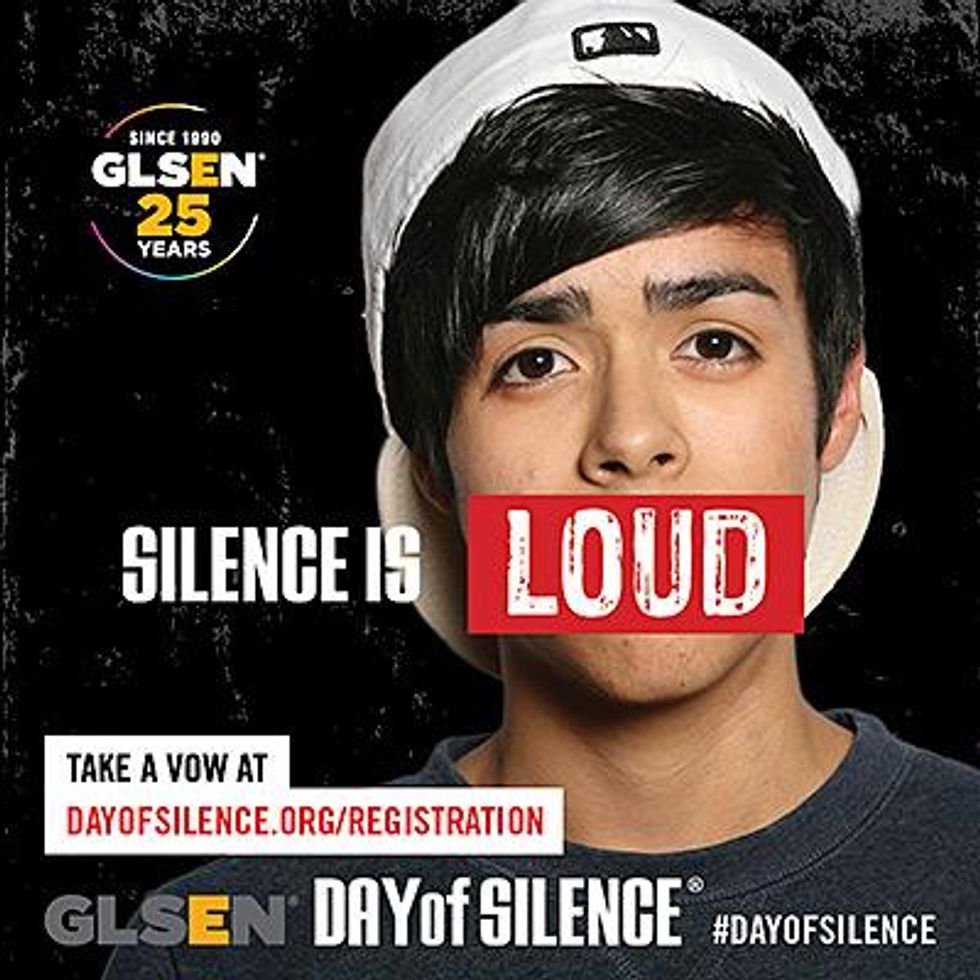 Some students use the Day of Silence as their coming-out moment or their introduction to LGBT activism. Others participate from a distance, going about their days normally but practicing "silence" by abstaining from social media for the day. Those who decide not to take a vow but who want to show solidarity sometimes wear the color red or sport supportive stickers or buttons.
Some students use the Day of Silence as their coming-out moment or their introduction to LGBT activism. Others participate from a distance, going about their days normally but practicing "silence" by abstaining from social media for the day. Those who decide not to take a vow but who want to show solidarity sometimes wear the color red or sport supportive stickers or buttons.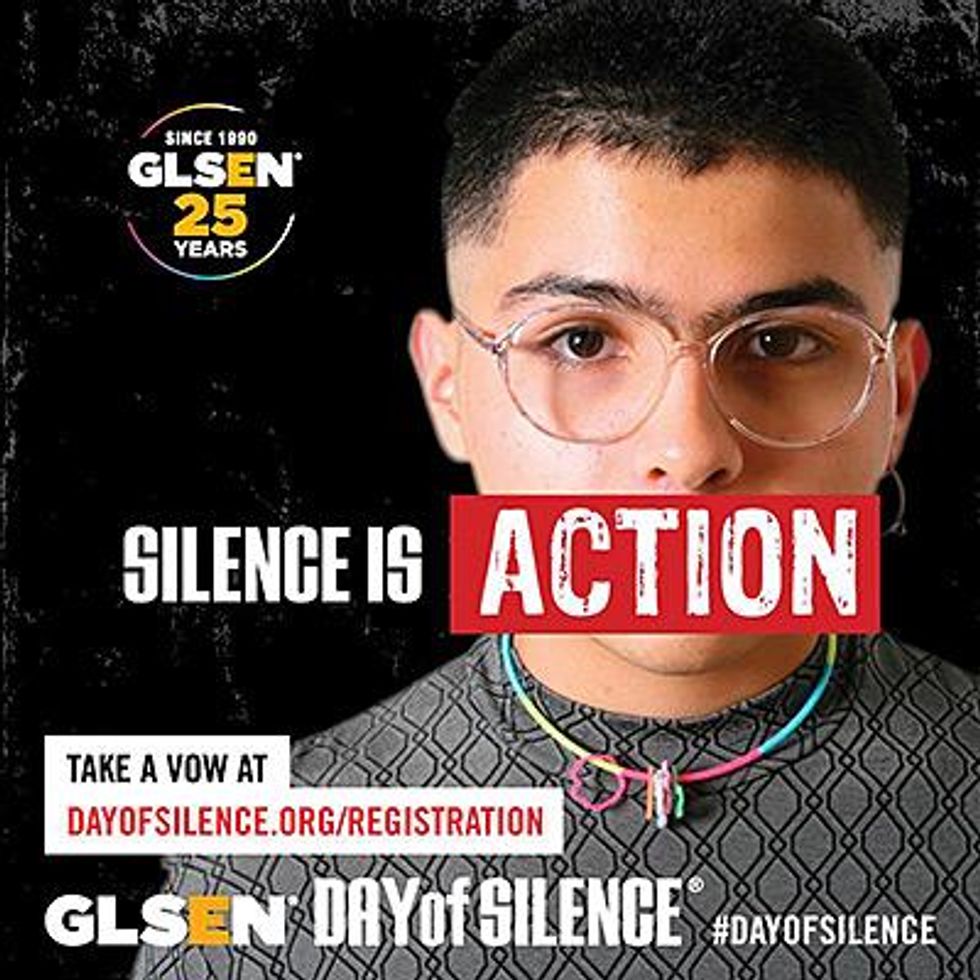 this powerful day by reflecting on what the Day of Silence meant to them and reporting back to GLSEN about their school climate. Some students also participate in "Breaking the Silence" events, where they gather to make noise for the first time all day and reflect on how the day affected them, individually and collectively.
this powerful day by reflecting on what the Day of Silence meant to them and reporting back to GLSEN about their school climate. Some students also participate in "Breaking the Silence" events, where they gather to make noise for the first time all day and reflect on how the day affected them, individually and collectively.


































